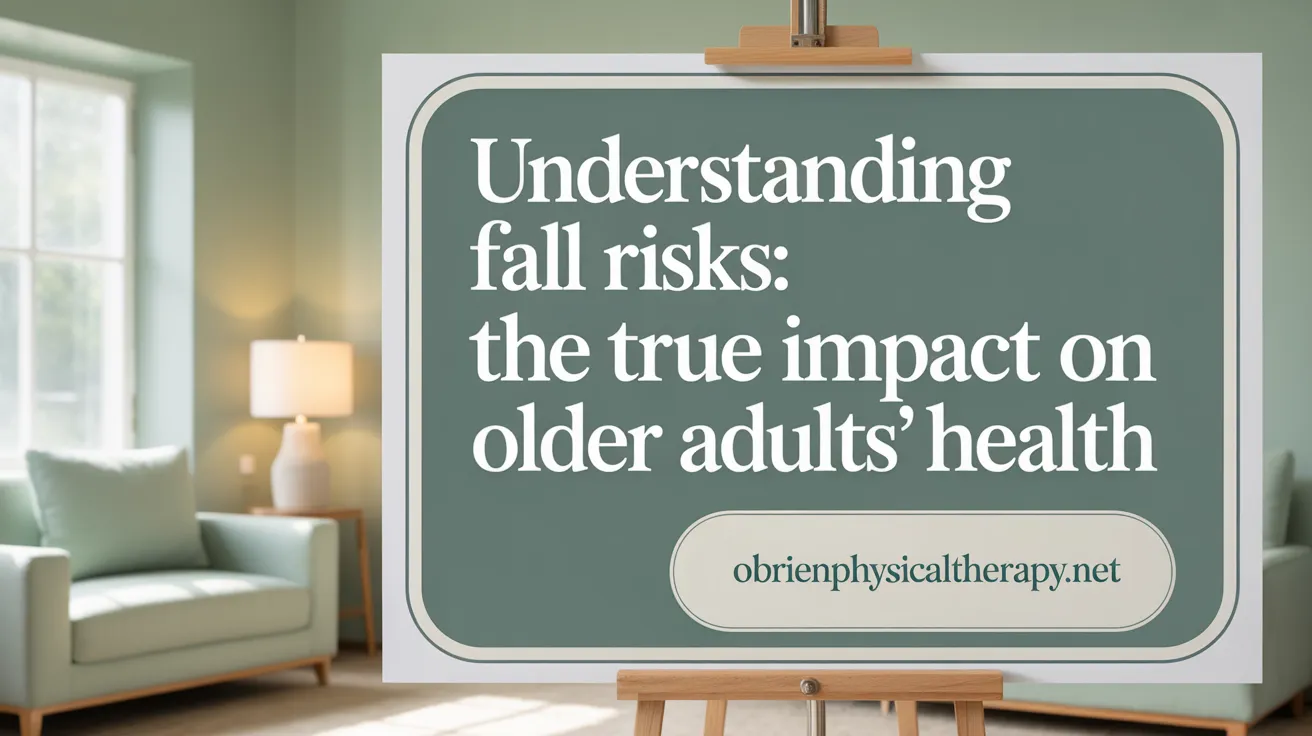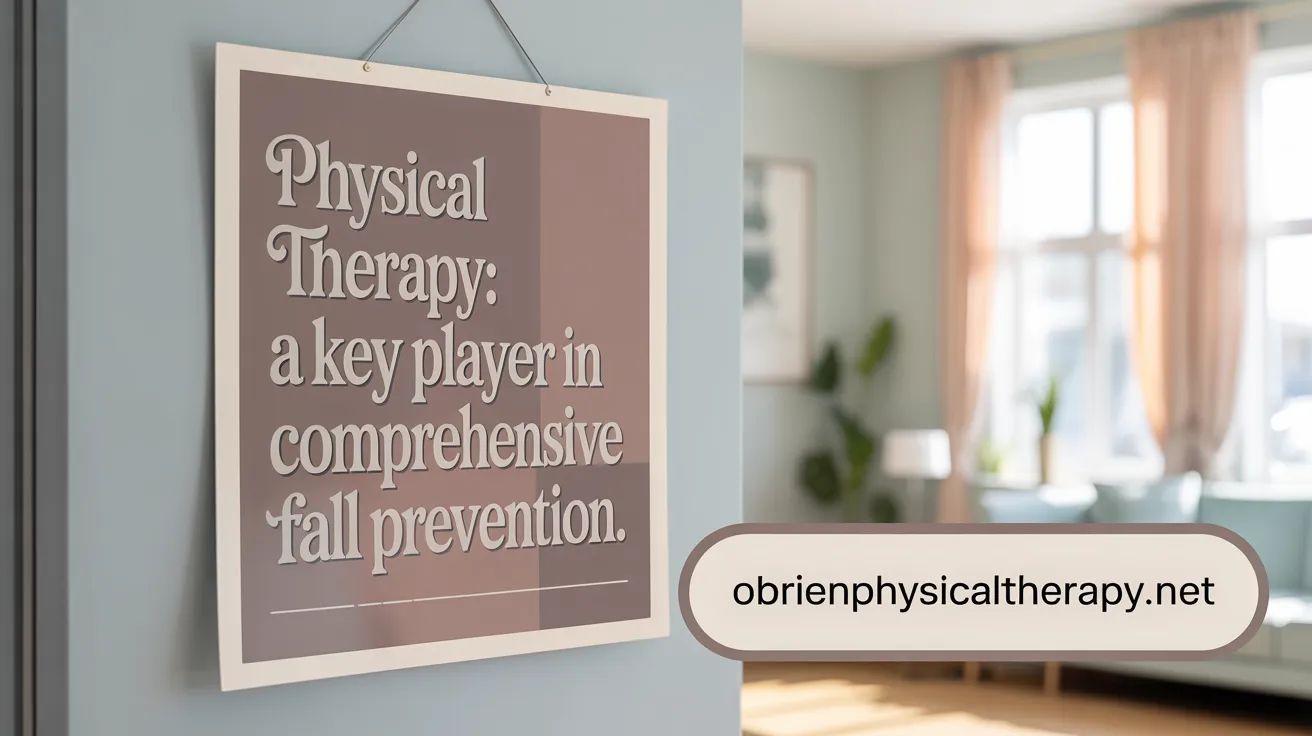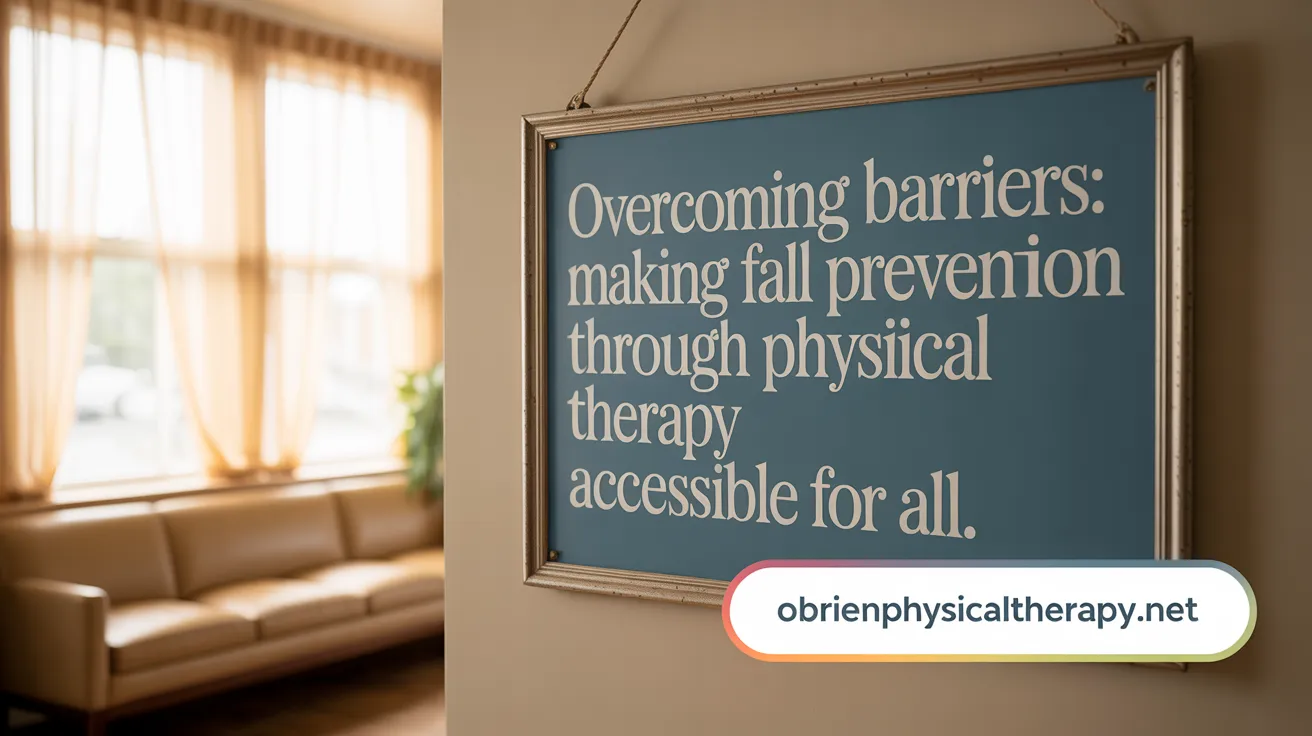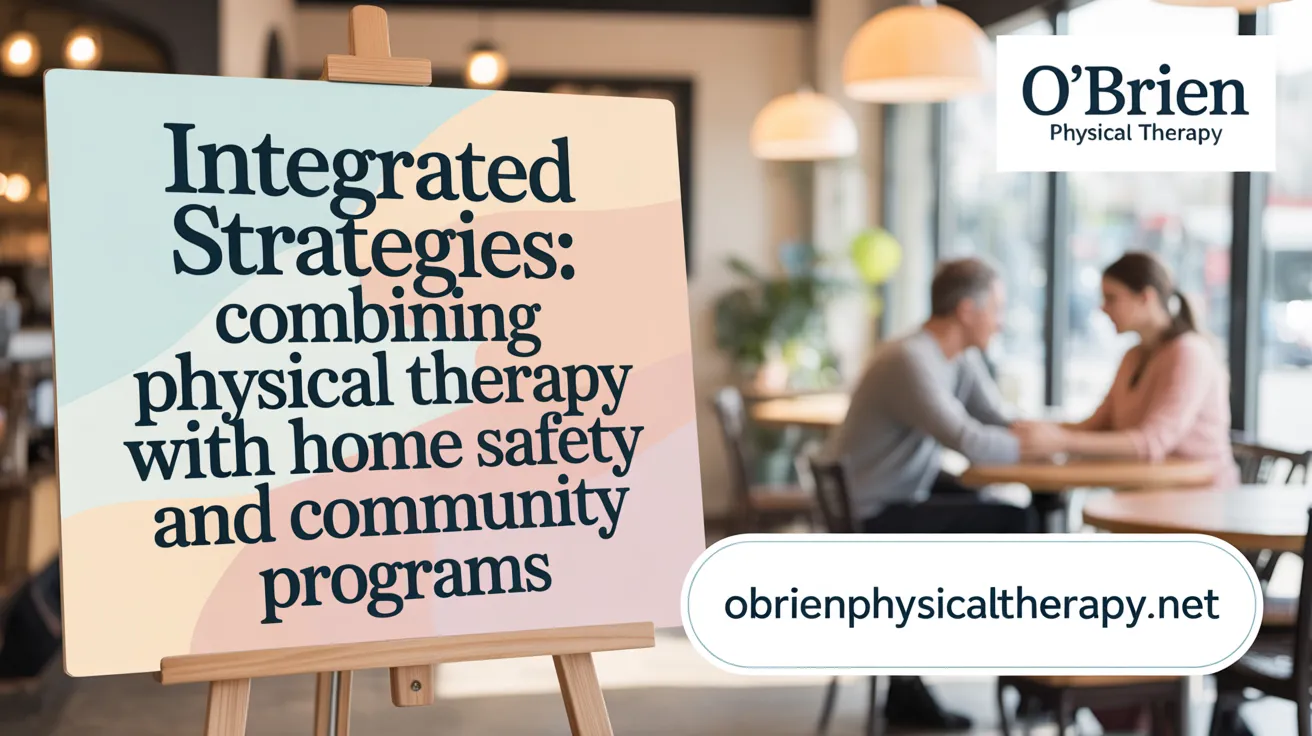The Critical Role of Physical Therapy in Senior Fall Prevention
Falls among older adults represent a leading cause of injury, hospitalization, and death globally, but emerging evidence confirms that physical therapy is a vital player in reducing fall risk. This narrative delves into the statistics, the multifaceted impact of physical therapy, and the evidence-based strategies shaping fall prevention efforts among seniors. By understanding the data and interventions, we can appreciate the powerful role physical therapists play in safeguarding senior mobility and independence.
Understanding the Scope and Impact of Falls in Older Adults

What is the prevalence and impact of falls among older adults?
Falls are a common and serious health concern for adults aged 65 and older. Over 25% of seniors experience a fall each year, with about 3 million emergency department visits and 1 million hospitalizations annually in the United States caused by fall injuries. Falls are the leading cause of injury-related deaths among this population, resulting in more than 38,000 deaths in 2021 alone. Hip fractures account for 95% of fractures caused by falls and represent a major source of morbidity, while falls also cause most traumatic brain injuries among older adults. Between 2012 and 2021, the fall-related death rate increased by 41%, underscoring the growing impact on senior health. For more details on Older adult falls statistics and the Impact of falls on older adults, see these resources.
What are the key factors that increase fall risk?
Several factors contribute to the increased risk of falls in older adults. These include lower body weakness and impaired balance or gait, often due to age-related muscle loss and sensory impairments like vision and hearing loss. Medication side effects, particularly from sedatives and antidepressants, also raise the risk. Chronic conditions such as arthritis, diabetes, or neurological disorders add to the susceptibility. Home hazards like clutter, loose rugs, and poor lighting, as well as improper footwear, further increase fall likelihood. Psychological factors, including fear of falling, can reduce activity, which in turn weakens balance and muscle strength, creating a cycle that heightens fall risk. For comprehensive information on Risk factors for falls and Causes of falls in elderly, refer to these sources.
Where do most falls occur among seniors?
The majority of falls happen indoors, especially within the home. Approximately 71.6% of fall-related emergency department visits for community-dwelling older adults are due to indoor falls. Common locations include bedrooms, bathrooms, and stairs—areas where seniors often face balance challenges. The prevalence of indoor falls is even higher among adults aged 85 and older. This highlights the critical importance of home safety modifications such as installing grab bars, improving lighting, and removing trip hazards to reduce risks. More about Home fall injury locations and effective Home safety to prevent falls can be found here.
Falls in older adults represent a severe health challenge with significant consequences. Identifying risk factors and common fall locations can guide preventive strategies to reduce injury and fatality rates in this vulnerable group. For further information on Fall Prevention Programs for Older Adults and Fall prevention strategies, these resources provide valuable insights.
Physical Therapy’s Multifaceted Role in Fall Prevention

How does physical therapy help prevent falls?
Physical therapy plays a vital role in reducing fall risk among older adults by integrating comprehensive assessments and personalized interventions. Physical therapists, as specialists in movement and balance, evaluate individuals to identify factors such as muscle weakness, gait irregularities, balance deficits, and environmental hazards within the home. They design tailored exercise programs that strengthen key muscle groups, improve flexibility, refine coordination and proprioception, and enhance gait and posture. Beyond physical conditioning, therapists educate seniors on home safety modifications—like removing tripping hazards and installing grab bars—and proper use of assistive devices such as canes and walkers. This holistic approach not only enhances physical stability but also builds confidence and diminishes the psychological fear of falling, contributing to a significant reduction in fall incidents (Older adults' perceptions of physical therapy, Seniors and balance, Physical Therapy to Prevent Falls).
What specific physical therapy interventions are effective?
Effective physical therapy strategies encompass balance retraining and strength-building exercises targeting the lower body and core muscles. Gait training and functional movement exercises promote safer and more confident mobility during daily activities. Well-established programs like the Otago Exercise Program and Tai Chi-based classes have been shown to reduce fall rates by 23% to 40%. These exercise regimens focus on developing endurance, improving joint flexibility, and enhancing reactive balance responses. Combining multiple components such as resistance training, balance exercises, and proprioceptive activities yields the best outcomes in fall prevention. Through consistent participation in these targeted interventions, older adults improve their overall mobility, sustain independence, and experience fewer fall-related injuries (Evidence-Based Fall Prevention Programs, Physical Therapy for Fall Prevention, Effectiveness of exercise interventions on fall prevention).
Data-Driven Evidence Supporting Physical Therapy Interventions

What does the data say about the effectiveness of physical therapy in fall prevention?
Physical therapy is highly effective in reducing falls among older adults. Research indicates that physical therapy can decrease fall incidents by up to 37%, while balance training alone may reduce falls by approximately 23%. These reductions are critical in preventing injurious falls and lowering emergency department visits. For more details, see Physical therapy benefits for fall prevention and Physical Therapy for Fall Prevention.
How effective are structured exercise programs?
Structured exercise programs, such as the Otago Exercise Program, Tai Chi, and multi-component regimens that combine strength, balance, and endurance exercises, lead to substantial improvements in muscle strength, coordination, and balance. These programs have shown to lower fall rates significantly, with home-based and community-delivered interventions offering personalized guidance that fosters adherence and confidence. Additional insights can be found at Exercise-Based Fall Prevention Programs and Falls Prevention for Older Adults.
What is the cost-effectiveness of physical therapy for fall prevention?
Economic analyses demonstrate that physical therapy for fall prevention is cost-saving, with net savings of about $2,144 per individual through reduced emergency care and injury costs. One home-based prevention program yielded a 24% decrease in fall rates, alongside improved quality of life and reductions in medically treated falls, further underscoring financial and health benefits. For further reading, see Cost-effectiveness of fall prevention and Value of physical therapy in fall prevention.
How is physical therapy integrated into community and healthcare settings?
Physical therapists collaborate with healthcare providers and community organizations to offer fall risk assessments and implement evidence-based strategies. Initiatives like the CDC’s STEADI toolkit and national falls prevention programs incorporate physical therapy to screen, treat, and educate at-risk populations, enhancing both clinical outcomes and community health. More information is available at Working with Physical Therapists and Physical Therapy Role in Healthy Aging.
What evidence supports physical therapy from randomized trials and systematic reviews?
Systematic reviews and randomized controlled trials affirm the positive impact of exercise and multifactorial physical therapy interventions on fall reduction. These studies report decreased rate of falls, lowered injurious fall incidents, and enhanced balance and mobility, with generally minor adverse effects. Tailored interventions based on thorough fall risk assessments yield the best outcomes, promoting sustained participation and safety. For comprehensive evidence, see Research on Falls, Exercise Interventions for Fall Prevention, and Interventions to Prevent Falls in Older Adults.
| Topic | Evidence Highlight | Impact Summary |
|---|---|---|
| Fall Incident Reduction | Up to 37% fall reduction with physical therapy (source) | Significantly lowers risk and injury |
| Exercise Programs | Otago Exercise, Tai Chi, multi-component exercises (source) | Improves balance, strength, and confidence |
| Cost-Effectiveness | Savings of about $2,144 per patient (source) | Reduces healthcare costs and supports patients |
| Community Integration | Use of STEADI and national programs (source) | Widens access and supports at-risk groups |
| Research Evidence | Systematic reviews and RCTs confirm effectiveness (source) | Validates and guides clinical practice |
Challenges and Barriers to Physical Therapy Utilization in Fall Prevention

What are the barriers to seniors receiving physical therapy for fall prevention?
Despite the proven benefits of physical therapy in preventing falls among older adults, several barriers hinder its widespread utilization. A significant barrier is lack of awareness; many seniors perceive physical therapy as treatment only after an injury or fall, not as a preventive measure. This misconception delays timely intervention. For more details, see Older adults' perceptions of physical therapy.
Cost concerns also limit access, especially when therapy is not fully covered by insurance or when co-pays are high. Additionally, some healthcare systems require a doctor's referral to access physical therapy, adding procedural hurdles that may discourage seniors. See Physical therapy referral requirements and Cost as a barrier to fall prevention.
There are systemic challenges in disseminating fall prevention programs. Limited funding and staffing shortages reduce community availability of evidence-based programs. Participant engagement is sometimes low, partly due to insufficient public awareness and difficulty aligning programs with individual fall risk profiles. For more, visit program congruency and evidence-based fall prevention programs.
Tailored approaches that consider individual risk levels, health status, and accessibility needs are crucial for effective program participation. Furthermore, disparities in access to physical therapy services arise from geographic, socioeconomic, and healthcare infrastructure factors. See adapting fall prevention programs.
Addressing these barriers requires enhanced education on the preventive role of physical therapy, streamlined referral processes, increased funding for community programs, and adaptable intervention designs to meet diverse needs and improve participation rates. For guidance, refer to Role of physical therapists in fall prevention.
Integrating Physical Therapy Into Broader Fall Prevention Frameworks

How does physical therapy fit into comprehensive fall prevention strategies?
Physical therapy is a crucial component of multifaceted fall prevention efforts. Beyond its role in improving balance and strength, physical therapy complements other interventions such as home safety modifications, medication reviews, and sensory assessments to address various fall risk factors.
Complementary interventions including home safety and medication review
Fall prevention programs recognize the importance of modifying environmental hazards like loose rugs, poor lighting, and unsafe stairs. Physical therapists educate older adults and their caregivers on these modifications. Concurrently, reviewing medications that cause dizziness or sedation helps reduce fall risk.
Role of multidisciplinary teams and community programs
Effective fall prevention is often achieved through multidisciplinary collaboration involving physical therapists, nurses, pharmacists, and physicians. Physical therapists frequently lead or contribute to community-based programs like "A Matter of Balance" and the "Otago Exercise Program", which have been shown to reduce falls among older adults.
National initiatives and resources like CDC STEADI and Falls Free®
The CDC’s STEADI initiative offers healthcare providers evidence-based tools for screening, assessing, and intervening in fall risk. Programs like Falls Free® promote national awareness and coalition-building efforts, facilitating the integration of physical therapy within broader public health strategies.
Training and credentialing for therapists specializing in fall prevention
Specialized training and credentialing courses enhance physical therapists' expertise in balance and fall risk management. These certifications prepare therapists to perform comprehensive assessments, develop individualized care plans, and implement targeted fall prevention strategies.
Importance of ongoing assessment and individualized care plans
Long-term fall prevention success relies on continuous evaluation and tailoring exercise regimens to older adults' evolving needs. Physical therapists conduct regular assessments of strength, balance, and mobility, ensuring that interventions remain effective and adapt to changes in health status.
This integrated approach, combining physical therapy with environmental, medical, and community resources, optimizes safety and independence for older adults, reducing fall incidence and associated health burdens.
Empowering Seniors Through Physical Therapy to Prevent Falls
Falls among older adults pose a significant public health challenge, but the substantial body of data demonstrates that physical therapy is a cornerstone of effective prevention. By improving strength, balance, mobility, and confidence, physical therapists reduce fall risk and associated injuries, improving seniors’ quality of life and independence. Despite barriers to access and utilization, integrating physical therapy with multifactorial strategies and leveraging national initiatives enhances outcomes. As evidence and programs advance, physical therapy's impact continues to grow, making it an indispensable component of senior care and fall prevention.
